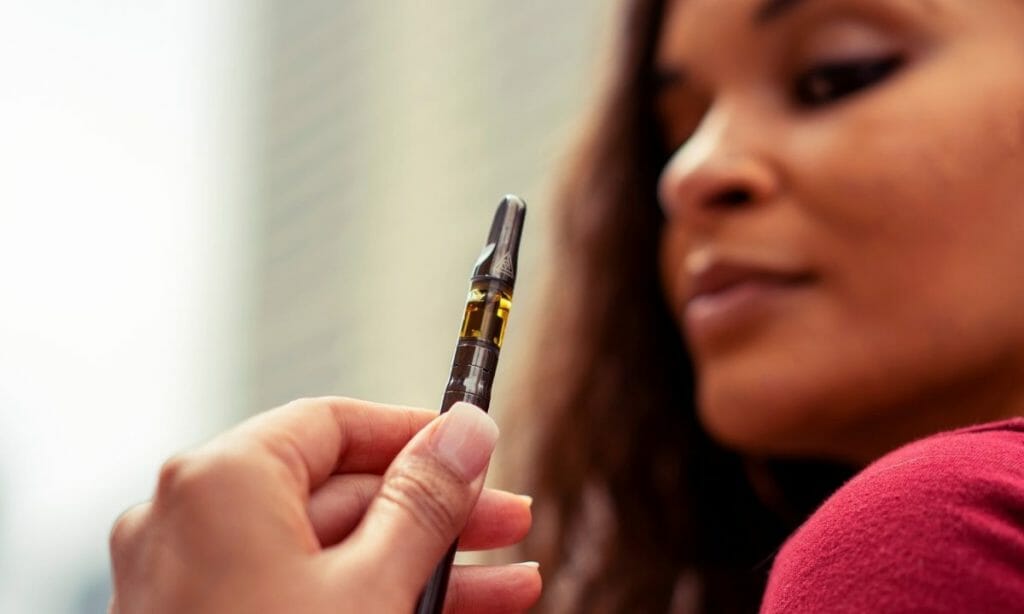Differences Between CO2 & Hydrocarbon Extraction
- January 25, 2022
- 5 Minutes
When it comes to extraction methods, there’s a lot of confusion because manufacturers often say that their extraction method is the best & purest.
Usually, this debate revolves around the two most common extraction methods—CO2 or hydrocarbon extraction.
However, most manufacturers will say positive things about the extraction method they use. After all, large-scale extraction setups are an expensive investment.
So what is the truth, and what are the real differences between CO2 and hydrocarbon extraction? Continue reading below as we explain the differences and the pros and cons between both types of extraction methods.
Solvent Extracts
In order to concentrate all the cannabis oils down into your favorite product, it needs to be extracted from the cannabis plant. This is a lot more difficult than it sounds because of the properties of the cannabinoids and other essential oils.
That’s because cannabinoids like THC and CBD, as well as terpenes, are not soluble in water. That means that they are not able to dissolve in water in order to remove them from the plant.
A solvent is any chemical like CO2, butane or propane (hydrocarbons) that can collect and concentrate the essential oils of the cannabis plant. However, there are major differences between the two and how they achieve the same goal of making cannabis extracts.
CO2 Extraction
CO2 extraction uses—you guessed it—CO2. Often this extraction method is called supercritical CO2 extraction.
This fancy term means that the extraction happens at very high pressure and temperature levels.
However, this intense process also pulls in more byproducts such as chlorophylls, waxes, and fats into the oil. The other problem is that terpenes and other essential oils can’t be extracted at supercritical levels.
That’s why CO2 extractors start with a subcritical extraction at a low pressure and temperature level. All this means that with CO2 extraction, there need to be multiple extractions of the same material at different temperatures and pressures.
Winterization
CO2 is usually advertised as a safer extract because CO2 is a safer chemical overall. However, CO2 extracts need further refinement in a process called winterization.
Remember, at the end of a run, there are usually a few different crude oils from both the subcritical and supercritical extraction processes. Those crude oils aren’t very pure and have waxes and lipids that need to be removed.
In order to remove them, ethanol is mixed in with the crude oil and then frozen. The solution is then filtered to remove the unwanted materials, and then the ethanol is evaporated.
Lastly, the oils are combined to make a product with cannabinoids and terpenes.
Pros and Cons of CO2 Extraction
Pros:
- CO2 is considered a green Solvent by the American Chemical Society
- CO2 is non-flammable, reducing explosion risks
Cons:
- Higher production cost
- Complex equipment and refinement drive up costs
- Inefficient—multiple extractions are needed
- Multiple extractions at different temperatures and pressures are necessary
- Less THC and other cannabinoids in the final product
- CO2 needs to be refined
- Using more solvents like ethanol
- High pressure used strips fats, waxes, lipids and chlorophyll in addition to cannabinoids
- Less natural flavor and terpene profile is muted due to degradation from heat
Hydrocarbon Extraction
Hydrocarbon extraction starts with solvents like butane or propane. Hydrocarbon extraction is one of the most popular forms of extraction because of the variety of cannabis concentrates that can be made.
First, cold hydrocarbon solvent washes over the cannabis plant material in a column. Then the hydrocarbon and oil mixture enters a collection tank and heats up.
The hydrocarbon solvent evaporates, and the cannabis concentrate is collected. After that, the oil is ready to purge or further refined depending on the final product.
Lastly, the oil is vacuum purged to remove the leftover hydrocarbon solvent.
Pros and Cons of Hydrocarbon Extraction
Pros:
- Lower cost to set up and run
- Better price and value
- More efficient extraction method
- Fewer byproducts in the initial extraction
- Higher potency on average
- More terpenes
- Less refinement needed
- Natural terpene profile is intact for better-tasting cannabis concentrates
Cons:
- Petroleum based solvent
- Hydrocarbons are flammable, additional safety equipment required
Which Extraction Method Is Better—CO2 or Hydrocarbon?
No method is necessarily better, but CO2 often doesn’t capture the essence of the cannabis plant.
However, you’ll often hear the controversy that hydrocarbon concentrates are dangerous because hydrocarbons are flammable. Of course, all professionally made hydrocarbon extracts are purged completely.
Many people don’t realize that CO2 products almost always have an ethanol refining step. Ethanol is also flammable and must be purged as a final step, like hydrocarbon extraction.
In the end, as long as the concentrates are being made by professionals and lab-tested, then there’s no cause for concern. Both methods are just as safe as the other.
As far as flavor and potency go, hydrocarbon extraction is the better method. If you want delicious true-to-plant flavor and high strength, then look out for Pyramid concentrates.
Our budder, sauce, and vape cartridges use hydrocarbon extraction to deliver the ultimate concentrate experience of incredible potency and flavor.




